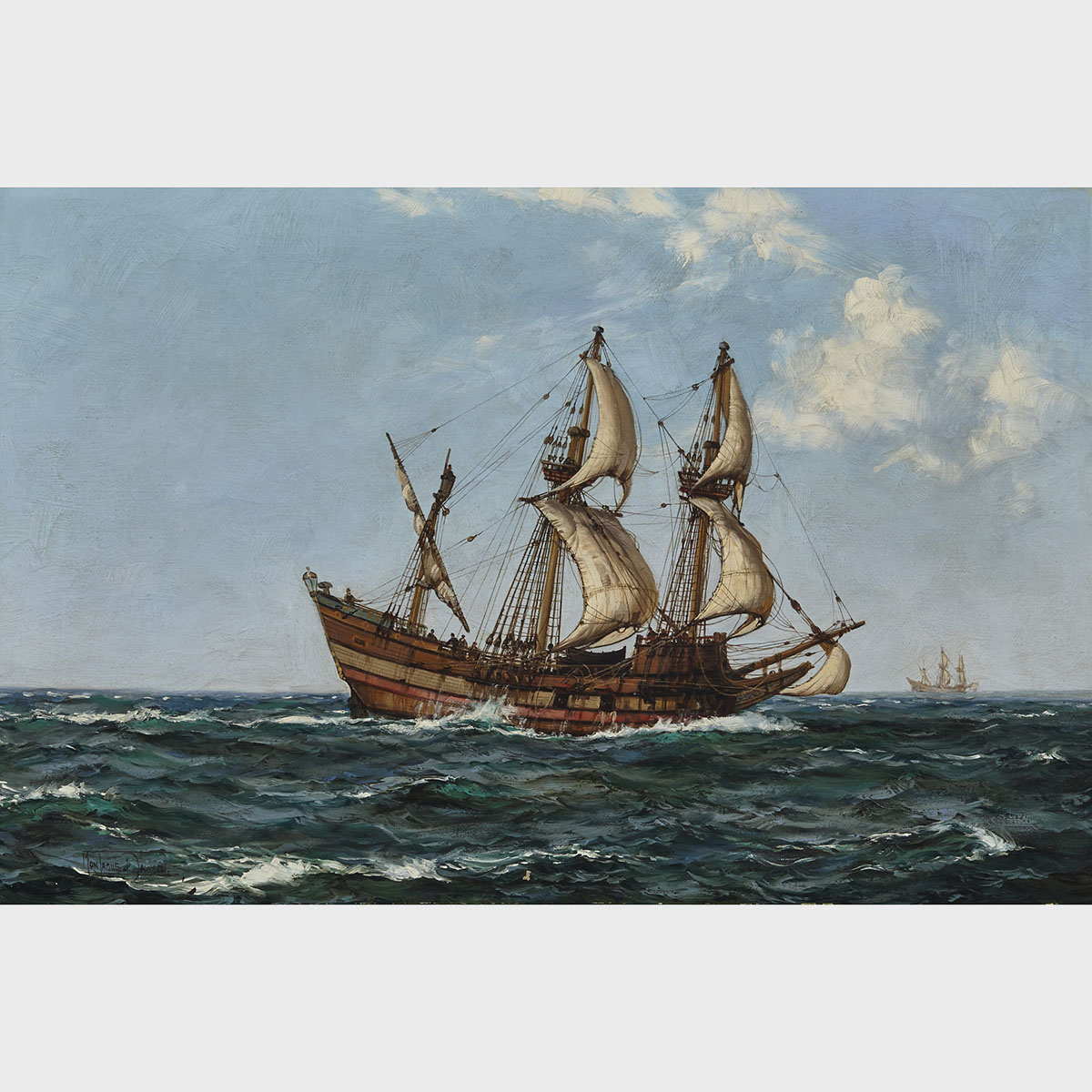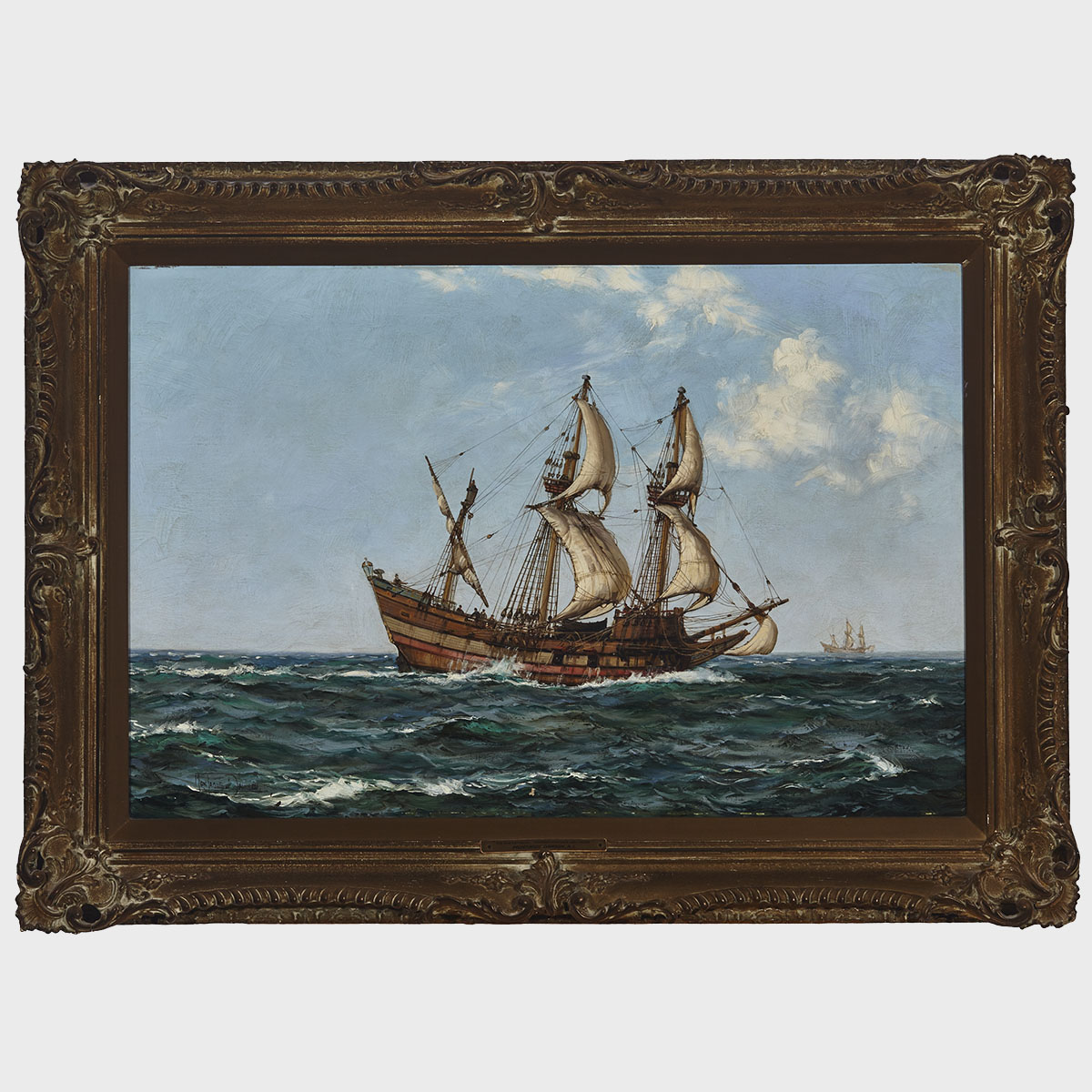Lot 502
MONTAGUE DAWSON (1890-1973)

Additional Images

Provenance:
With Haynes Art Gallery, Toronto, Inventory No. 1244 in 1945, their inscribed dated label frame verso;
Private Collection, Canada
Note:
This nautical work of Henry Hudson’s ship, Half Moon, by English painter Montague Dawson commemorates the early exploratory missions into the vastness of the Canadian landscape.
Despite not having any formal art training Dawson had a great passion and skill for illustration. After joining the British Navy during the First World War, he continued to paint, perfecting his skills and establishing himself as a preeminent nautical genre painter, so much so that American presidents Johnson and Eisenhower, and the Royal British family were all his patrons.
Born in England in the late 16th century, little is known of Henry Hudson before he began the last four journeys of his career. While he is considered one of the most famous explorers in history, he never actually found what he was looking for. After two failed missions trying in vain to find a northern passage route to the enviable trade destinations of Asia and the Pacific, he joined the Dutch East India Company in 1609 and took command of the ship Half Moon. While he was again obstructed by the immensity of the Arctic sea, Hudson decided to sail west, rather than north, over the Atlantic Ocean in pursuit of trade routes. Hudson reached Nova Scotia by summer, and from there he further explored the New York Harbour and what is now his namesake river,The Hudson. Here he found bountiful and abundant wilderness and met and occasionally clashed with indigenous peoples. While considered unsuccessful, this journey inspired him to return the following year with the renewed intent of finding the enigmatic passageway. In 1610 he sailed the ship Discovery back across the Atlantic, entering what is now known as the Hudson Strait and Hudson’s Bay, before reaching James Bay where his journey came to a fateful end. After a long, bitter winter trapped in ice, tensions aboard the ship were high. When Hudson announced that the mission would continue, several crew members mutinied and stranded Hudson and his supporters on the open sea.
While his poor leadership ultimately led to his downfall, Hudson went farther than any of his predecessors in his resolute exploration of unknown and treacherous territory, and discovered what would become one of the most profitable and identifiable outposts in Canadian history.



